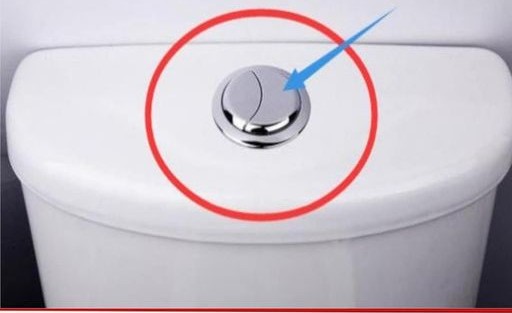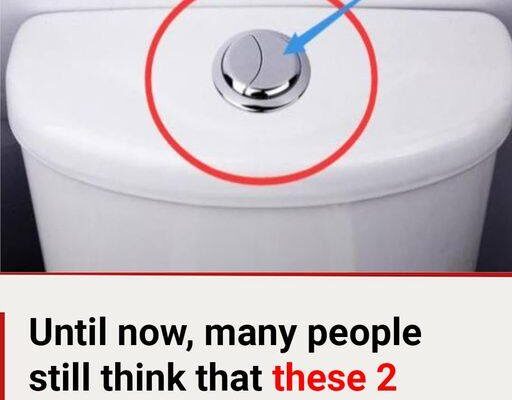Many individuals still believe that these two buttons are only for flushing.

You might have noticed two buttons on top of a modern toilet if you’ve recently used one. These buttons are really a component of a dual flush system that is intended to save water, despite the fact that many people believe they are only there to flush garbage. However, how does it operate and what makes it significant? Let’s examine the functions and advantages of dual-flush toilets, which many users still find rather confusing.
The Operation of Dual Flush Toilets
Depending on the kind of waste, the dual flush system gives two flushing choices, each of which releases a different volume of water. The bigger button flushes solid waste to make sure it is completely removed, using between 6 to 9 liters of water. The smaller button, on the other hand, only consumes 3-4.5 liters of water, which is enough for liquid waste and requires less water to flush.
Compared to conventional single-flush toilets, this alternative is more water-efficient since it enables users to adjust their water consumption according to the circumstances. With each flush, consumers may prevent needless water waste by choosing the right button.
Conserving Water with Dual-Flush Toilets
The potential for large water savings is one of the main advantages of dual flush toilets. Regardless of whether the waste is liquid or solid, traditional single-flush toilets always emit a certain volume of water, usually 9–12 liters. Especially in homes with several flushes per day, this constant flush volume might result in excessive water use.
Up to 20,000 liters of water may be saved annually by a household by pressing the proper button for each flush. Dual flush toilets are an economical and environmentally friendly option because of the reduced water use, which also helps to minimize water costs.
Financial and Environmental Effects
Installing dual flush toilets might be more expensive than standard ones, but there are significant long-term benefits. Over time, cheaper utility costs result from using less water each flush, which might somewhat cover the original installation expense. Dual flush toilets are an appealing choice for environmentally concerned homes wishing to cut back on water usage because of these financial advantages.
In addition to saving money for individuals, dual flush toilets also lessen the strain on nearby water supplies and wastewater systems, which is especially advantageous in regions that frequently experience droughts or water shortages. Dual flush toilets are essential for encouraging sustainable living as more communities stress the need of conserving water.
The Dual Flush System’s History
Victor Papanek, an industrial designer renowned for his emphasis on ecological design, came up with the concept for dual flush toilets. By providing two flushing alternatives, each specific to the type of waste being flushed, Papanek’s approach sought to decrease water waste. Due to recurrent droughts and scarce water supplies, Australia, a nation dedicated to water conservation, was the first to adopt his creative concept in the 1980s.
Dual flush toilets gained popularity in other nations, particularly in North America and Europe, as a result of its success in Australia. Dual flush systems became more commonplace in households and public buildings as water conservation became more and more of a concern on a worldwide scale.
Why a Lot of People Are Still Perplexed
Dual flush toilets have obvious environmental advantages, yet many people still don’t know how to operate them properly. Even when flushing liquid waste, individuals frequently hit the bigger button out of habit when there are no clear instructions or labeling. Dual flush toilets’ capacity to save water is diminished by this propensity.
Users must be made aware of how these toilets operate in order to get the most out of them. People can be encouraged to make the correct decision by taking easy measures like placing teaching materials in public facilities or placing labels that explain the differences between the two buttons next to them.
Conclusion: Minor Adjustments, Significant Savings
Dual flush toilets are a useful water-saving device in addition to being a contemporary bathroom accessory. People may significantly reduce water use by being aware of how these toilets work and using the appropriate button according to the kind of flush. Even though the initial installation cost could be greater, it’s a worthwhile investment because of the long-term water bill savings and the lessened environmental effect.
Dual flush toilets are a tiny but significant step toward a greener future as more people adopt sustainable living. Therefore, the next time you see two buttons on a toilet, keep in mind that they serve more purposes than just flushing; they also help save water, save the environment, and change the world, one flush at a time.



